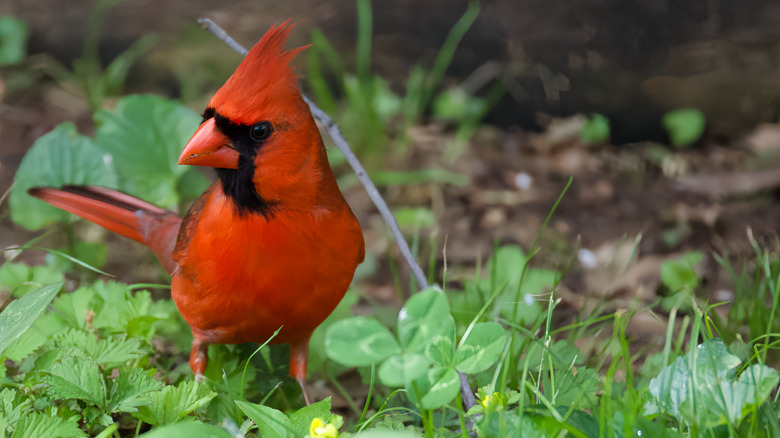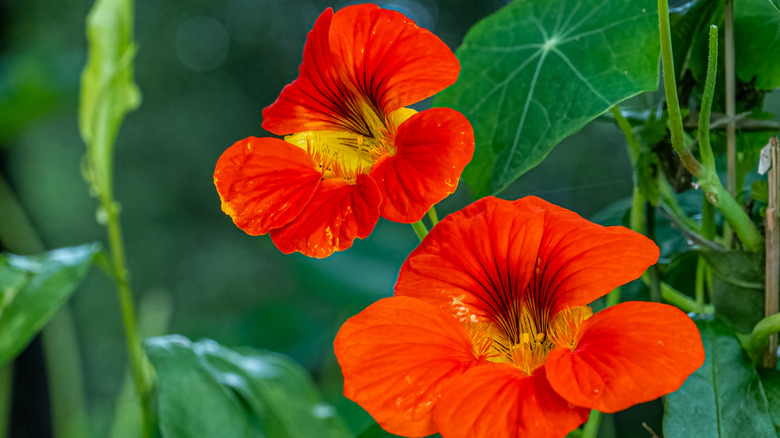The Colorful Self-Seeding Flower You Should Plant To Attract Beautiful Cardinals
As the name suggests, self-seeding flowers propagate by spreading their seeds onto the soil around them. At the appropriate time, the seeds germinate and new flowers grow. Nasturtiums (Tropaeolum spp.), with their bright and sunny blooms, are champion self-seeders. In warmer climates the plants self-seed year-round, creating new plants so successfully that some gardeners find them invasive, even though they don't carry that official designation. Butterflies, birds, and bees love the exceptionally sweet nectar of nasturtiums, but it's the seeds of the nasturtium that attract cardinals.
Since cardinals don't migrate, bright red male cardinals and their less colorful female counterparts delight bird lovers year-round. Their diets are ecumenical, encompassing insects, buds, fruit, and larvae as well as seeds, which they scavenge from the ground. Cardinals' strong jaw muscles help them eat the large seeds of plants like sunflowers and nasturtiums.
Both common varieties of nasturtiums produce the seeds that attract cardinals. The climbing or trailing variety (Tropaeolum majus) can grow 10 feet long, snaking its way through the garden or climbing a trellis. Bush or dwarf nasturtiums (Tropaeolum minus) hug the ground, growing only about a foot tall. Both varieties are hardy in Zones 2 to 11 and perennial in Zones 9 to 11. Pair them with other self-seeding flowers that will fill your yard with color.
How to grow nasturtiums for seed-eating avians
Nasturtiums are very easy to grow. They're happiest in poor soil with an acid to neutral pH and good drainage. Plant them in full sun, though if you're in an area with strong afternoon sun, some shade is preferable to reduce stress on the plant. They don't benefit from fertilizer which will only promote the growth of foliage, not flowers or the seeds the cardinal love. Nasturtiums produce vibrant blooms in strong shades of orange, yellow, and red and distinctive, almost-round green leaves that can reach 4 inches wide. While they're drought-tolerant, nasturtiums do benefit from occasional watering in high summer.
Nasturtiums don't like to be transplanted and grow easily from seed. Plant seeds a half-inch deep and 10 to 12 inches apart once the danger of frost has passed in the spring or seed indoors in February for a vibrant spring garden. Soak the seeds overnight before planting them into your beds or a planter — priming the seeds will improve the germination process. Seedlings should start to come up within a week to 10 days and will bloom until the first frost after summer, though in the warmest zones this annual will continue to produce seeds through the winter.

